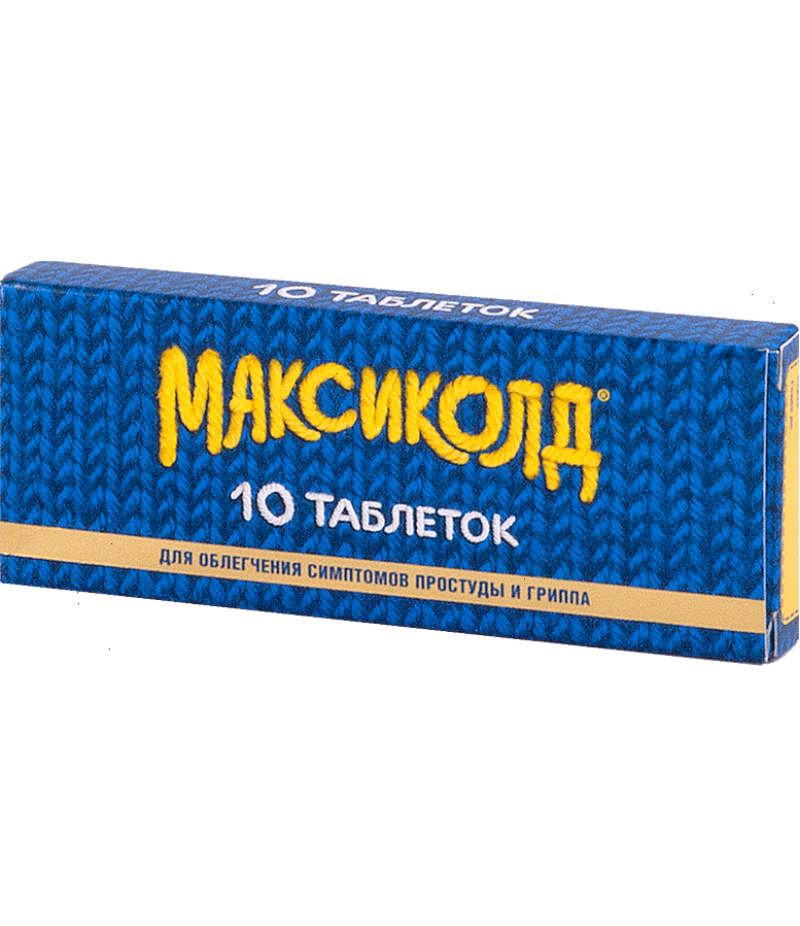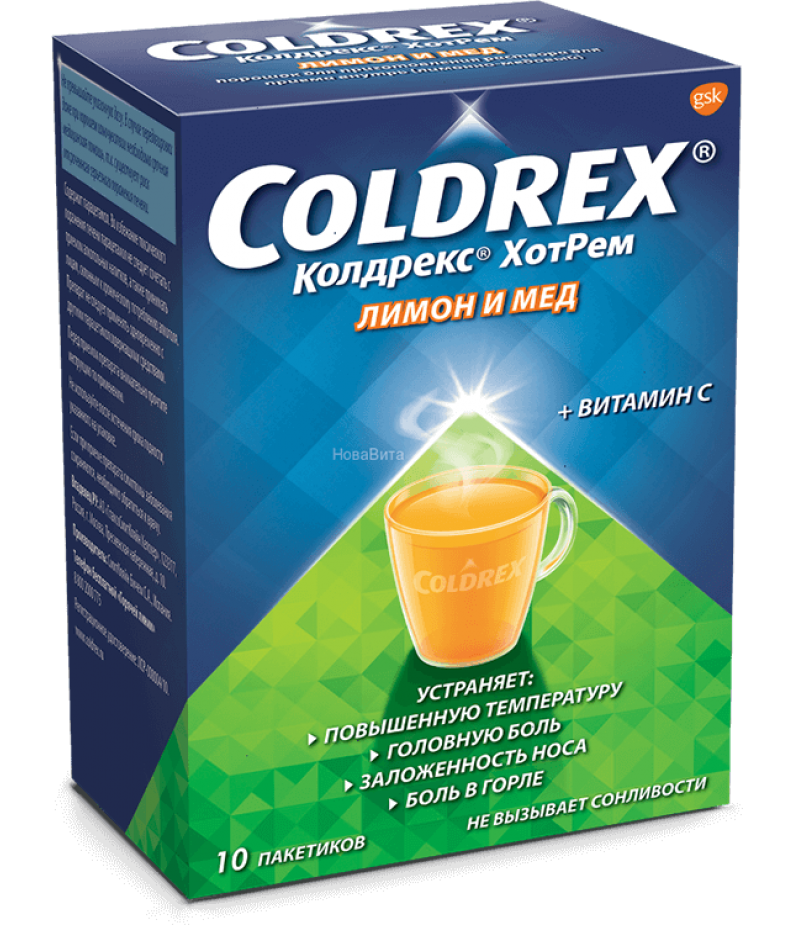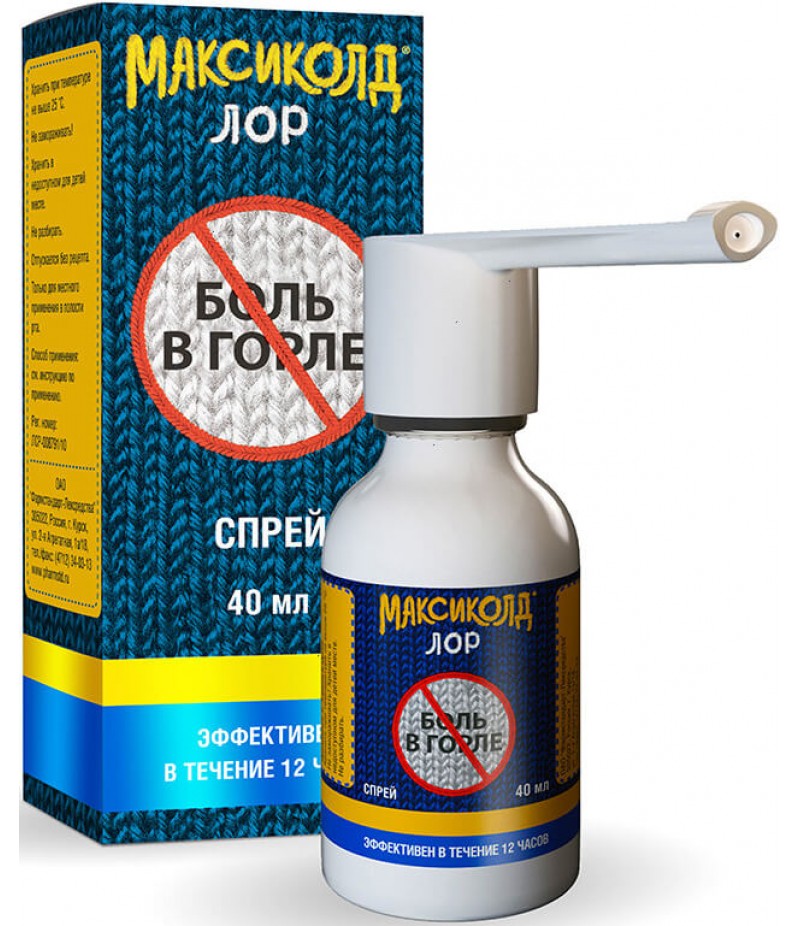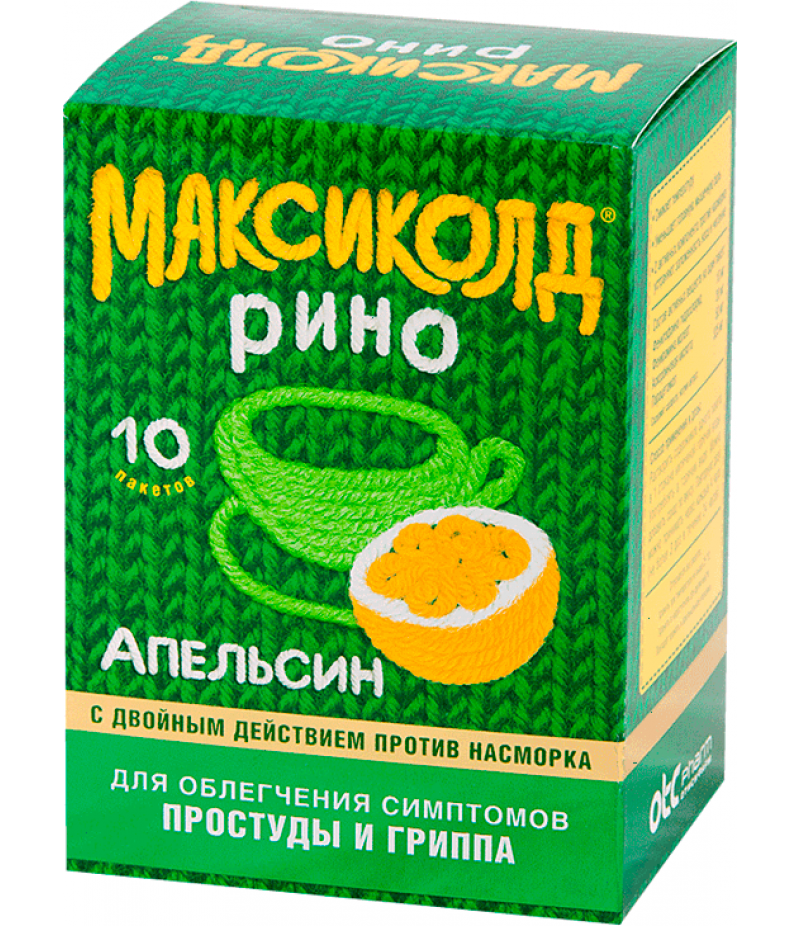Maxycold tabs 0.5+0.01+0.03gr #10
- $10.54
- 3 or more $10.40
- Availability:In Stock
Maxycold user manualReed more and buy Maxycold on this pageCompositionOne tablet with a film membrane contains 500 mg of paracetamol, 10 mg of phenylephrine hydrochloride, 30 mg of ascorbic acid.The composition of inactive substan..
Tags: tabs
Maxycold user manual
Reed more and buy Maxycold on this page
Composition
One tablet with a film membrane contains 500 mg of paracetamol, 10 mg of phenylephrine hydrochloride, 30 mg of ascorbic acid.
The composition of inactive substances of the nucleus includes croscarmellose sodium, calcium hydrogenphosphate, magnesium silicate, talc, ethylcellulose and giprolase, as well as a dye called "Yellow Sunset Sun", in the shell - hypromellose and giprolose, talc, titanium dioxide.
One packet of powder for cooking and ingesting contains 750 mg of paracetamol, 60 mg of phenylephrine hydrochloride, 10 mg of ascorbic acid. The composition of inactive substances includes colloidal silicon dioxide, sodium saccharin, sodium citrate, citric acid, potato starch, flavor, lactose and yellow quinoline dye.
Form of issue
Maxycold is produced in tablets of pinkish-orange color, oval double-convex shape, with a risk. On a cross-section there are white and orange impregnations on a pinkish-orange background. Tablets are sealed in cellular packs of 1, 6, 10, 12 tablets, in one package can be - 2, 10, 20, 12, 24 tablets.
The powder is a crystalline substance having a light yellow color and a specific odor, white crystals and decomposing lumps are acceptable. In the finished form, the solution is opalescent, also characteristic of light yellow color and the smell of orange. Powder of 5 grams is packed in sachets of combined material, in one cardboard bundle there may be 5, 10, 50 sachets.
pharmachologic effect
It exerts an antipyretic, vasoconstrictive, analgesic effect on the body.
Pharmacodynamics and pharmacokinetics
The effect of the combined preparation is based on the properties of the active substances and their combination:
Paracetamol is a known analgesic and antipyretic acting on pain centers, as well as thermoregulation. Provoking an analgesic and antipyretic effect, Maxycold's active substance can reduce headaches and muscle pain, fever phenomena, and alleviate pain in the throat.
Through phenylephrine, LS has a vasoconstrictive effect, facilitates nose breathing and purification of the paranasal sinuses and nasal passages.
Ascorbic acid as a vitamin (C) takes part in the regulation of oxidation-reduction reactions, carbohydrate metabolism, increases resistance to infections.
Indications for use
The drug is used as a symptomatic therapy for such infectious and inflammatory diseases as influenza and other acute respiratory viral infections (ARVI), which are accompanied by hyperthermia, chills, headache, nasal congestion, and the presence of pain in the muscles and bones, throat, nose.
Contraindications
Do not take Maxycold:
with severe renal and / or liver failure;
with hyperthyroidism and thyrotoxicosis;
in the presence of such heart diseases as severe stenosis in the aortic estuary, tachyarrhythmia, myocardial infarction;
with arterial hypertension;
during and 2 weeks after the end of therapy with tricyclic antidepressants, beta-blockers, monoamine oxidase inhibitors, and other paracetamol-containing drugs designed to relieve the common cold, flu, and stuffy nose;
with hyperplasia of the prostate;
at a closed angle glaucoma;
children under 9 years of age or weighing less than 30 kg;
specific hypersensitivity to the components of the drug.
Contraindicated in the use of alcohol-containing foods in order to avoid toxic effects on the liver, as well as chronic alcoholism.
Take with caution
If an enzyme deficiency is found-glucose-6-phosphate dehydrogenase, benign hyperbilirubinemia.
Pregnant and breast-feeding patients.
Patients in old age.
Side effects
The list of adverse reactions is based on three constituents of active substances:
Paracetamol
Can lead to violations of hematopoiesis, among them anemia, methemoglobinemia, thrombocytopenia.
Phenylephrine
There may be migraine, nausea, vomiting, increase or decrease in blood pressure, irritability. Also, on the background of therapy, angina, bradycardia, palpitation, dyspnea, tachycardia, ventricular arrhythmia can develop.
Ascorbic acid
Irritation or ulceration of the gastrointestinal mucosa, hyperacid gastritis, a decrease in capillary permeability leading to worsening of trophism in tissues, in addition, blood pressure increases, hypercoagulation or microangiopathy, hyperprothrombinemia, erythropenia, thrombocytosis, neutrophilic leukocytosis, glucosuria, hypokalemia, suppression of pancreatic endocrine function .
Possible systemic reactions from the immune system, manifested by rashes and urticaria, right up to the angioedema. Long-term treatment can lead to impaired renal function, including pollakiuria, hyperoxaluria, nephrolithiasis. In addition, there was an increase in CNS excitability, insomnia, migraine.
Instructions for use (Method and dosage)
Take the pills inside, before a full meal or 1-2 hours after it, it is recommended to drink plenty of water.
Dosage for adults and children from 12 years (with a body weight of more than 40 kg)
1 -2 tablets every 4 or 6 hours at the frequency of reception up to 4 times during the day.
Dosage for children 9-12 years (with a body weight of more than 30 kg)
1 tablet every 4 or 6 hours at the frequency of reception up to 4 times during the day.
The drug should not be taken more than 5 days in a row as an anesthetic or more than 3 days - an antipyretic agent, without contacting a doctor.
Overdose
Symptoms for the first 24 hours
There is a pallor of the skin, nausea and vomiting, abdominal pain, the development of anorexia and glucose metabolism disorders, the emergence of metabolic acidosis.
Symptoms in 12-48 hours
Severe overdose can lead to hepatic insufficiency with progressive encephalopathy, up to coma and death or to acute renal failure with tubular necrosis. Arrhythmia and pancreatitis were also recorded.
Treatment
Assign donors SH-grypp and the precursors of the synthesis of glutathione-amino acids methionine, acetylcysteine. After 8 hours of therapy, the need arises to add or continue existing appointments to be determined based on the concentration of paracetamol in the blood and the time it is taken.
Interaction
The simultaneous use of inhibitors of MAX with monoamine oxidase, sedatives and ethanol can cause the potency of their effects.
The drug interaction of paracetamol as a constituent substance of the drug
When taking high doses can increase the effects of anticoagulants in connection with a decrease in secretory function of the liver in the synthesis of procoagulant factors. In addition, it reduces the effectiveness of uricosuric drugs.
Long-term therapy with barbiturates can reduce the effects of paracetamol.
Long-term use with non-steroidal anti-inflammatory drugs increases the risks of "analgesic" nephropathy, papillary necrosis in the kidneys, transition to the terminal stage of kidney failure.
Simultaneous long-term use in high doses along with salicylates increases the risk of detection of kidney or bladder cancer.
Phenylephrine
Oppresses the hypotensive effect of antihypertensive drugs, including diuretics (for example, methyldopa, Mekamilamin, Guanadrel, Guanethidine).
The antianginal effect of nitrates decreases.
Admission of thyroid hormones mutually increase effects with phenylephrine and may increase the risk of coronary insufficiency (most often with coronary atherosclerosis).
Simultaneous application with ascorbic acid
It is possible to increase the concentration in the blood of benzyl penicillin, tetracyclines, decrease the action of heparin, indirect anticoagulants.
Increase the overall clearance of ethanol.
With acetylsalicylic acid, barbiturates and Primidon, absorption decreases and the concentration of ascorbic acid withdrawn in urine increases and the level of excretion of Acetylsalicylic acid decreases.
Improves the absorption of iron through the intestine.
With salicylates, sulfanilamide short-acting agents, the risk of crystalluria increases.
The chronotropic effect of isoprenaline decreases.
High doses or long-term therapy can interfere with the interaction of disulfiram with ethanol, accelerate the excretion of Mexiletina by the kidneys.
Terms of sale
To buy Maxycold you not need a prescription.
Storage conditions
The storage location must be out of the reach of children and pets, protected from moisture with a temperature of no more than 25 ° Celsius.
Shelf life - 2 years from the date of issue.
Reviews
Maxycold is a fairly popular drug used at the onset of cold or flu. There are many tastes, forms of the product: Maxycold spray, tablets, powder, which allows you to individually choose the most convenient means. Maxycold to children is not recommended until 9 years old, so mothers with young children have to look for a substitute.





